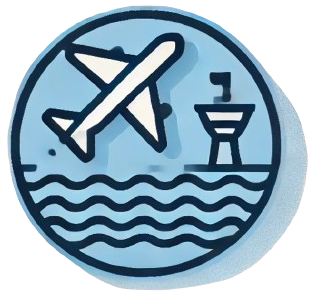When it comes to aviation safety
Thunderstorms pose some of the most significant hazards for pilots and their passengers. As a result, pilots take extensive precautions to avoid flying through or near these turbulent weather phenomena. Understanding the risks presented by thunderstorms and how pilots navigate around them can provide valuable insights into how safety is prioritized in the aviation industry.
Thunderstorm Hazards: The Cumulonimbus Cloud
Thunderstorms are often associated with cumulonimbus clouds, which are characterized by large water droplets and significant vertical updrafts. These clouds can develop quickly and grow to substantial heights, becoming powerful storm systems that may include:
- Lightning
- Heavy rain
- Violent turbulence
Given their potential dangers, pilots are trained to identify these clouds and take necessary actions to avoid them. While thunderstorms may appear only as dark clouds with rain from the ground, pilots understand the complex and hazardous conditions hidden within.
Navigating Around Thunderstorms
When faced with thunderstorms during flight, pilots adhere to strict safety protocols. The Federal Aviation Administration (FAA) recommends that pilots maintain a distance of at least 20 miles from any thunderstorm. This distance is crucial, particularly on the downwind side where turbulence and windshear can be most intense. Moreover, when en-route, pilots often seek to fly at altitudes that keep them above the tops of the storm clouds, allowing them to steer clear of the most turbulent conditions present.
In addition, pilots are advised to avoid flying under thunderstorms and never to attempt takeoffs or landings when a storm is approaching. By adhering to these guidelines, pilots significantly reduce the risk of turbulence and other storm-related hazards that can affect passenger jets.
The Science of Turbulence
Turbulence can have various causes, but thunderstorms are one of the most common sources of convective turbulence. Flying over storms may still involve a level of turbulence, especially as aircraft can encounter strong air currents and instability associated with the storm’s dynamic core. Consequently, pilots train extensively to understand not only how to detect thunderstorms but also how to respond when they encounter turbulence caused by them.
Flight cancellations often arise due to severe weather, including hurricanes and tropical storms, which present extreme challenges beyond just turbulence. Pilots, dispatchers, and airline operations teams continually monitor weather conditions to ensure that safety remains the primary focus.
Summary
In summary, the avoidance of thunderstorms is a critical aspect of flight safety that pilots take very seriously. Through extensive training, adherence to safety protocols, and a deep understanding of weather patterns, pilots strive to ensure smooth and safe flying experiences for all passengers. The impact of storms on aviation is profound, but with careful navigation and planning, the skies can remain safe even in the face of severe weather.
